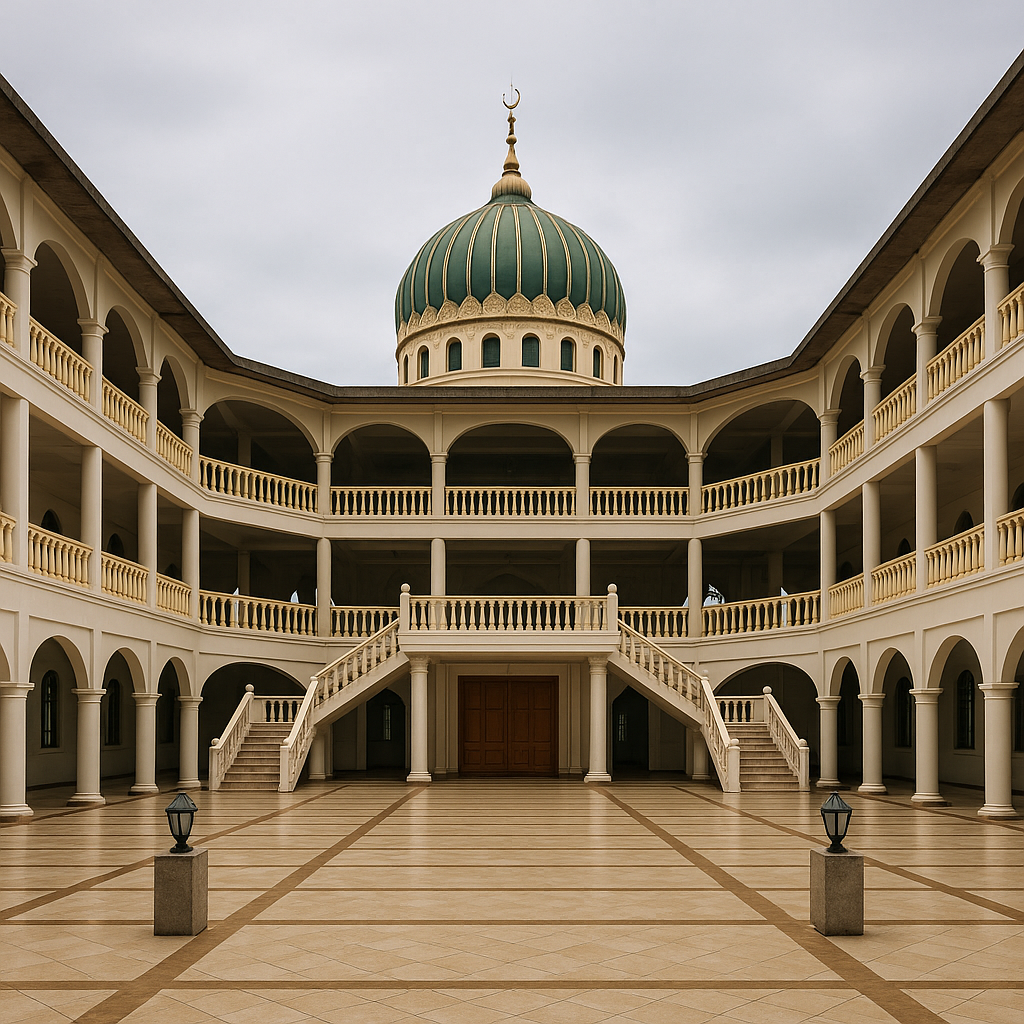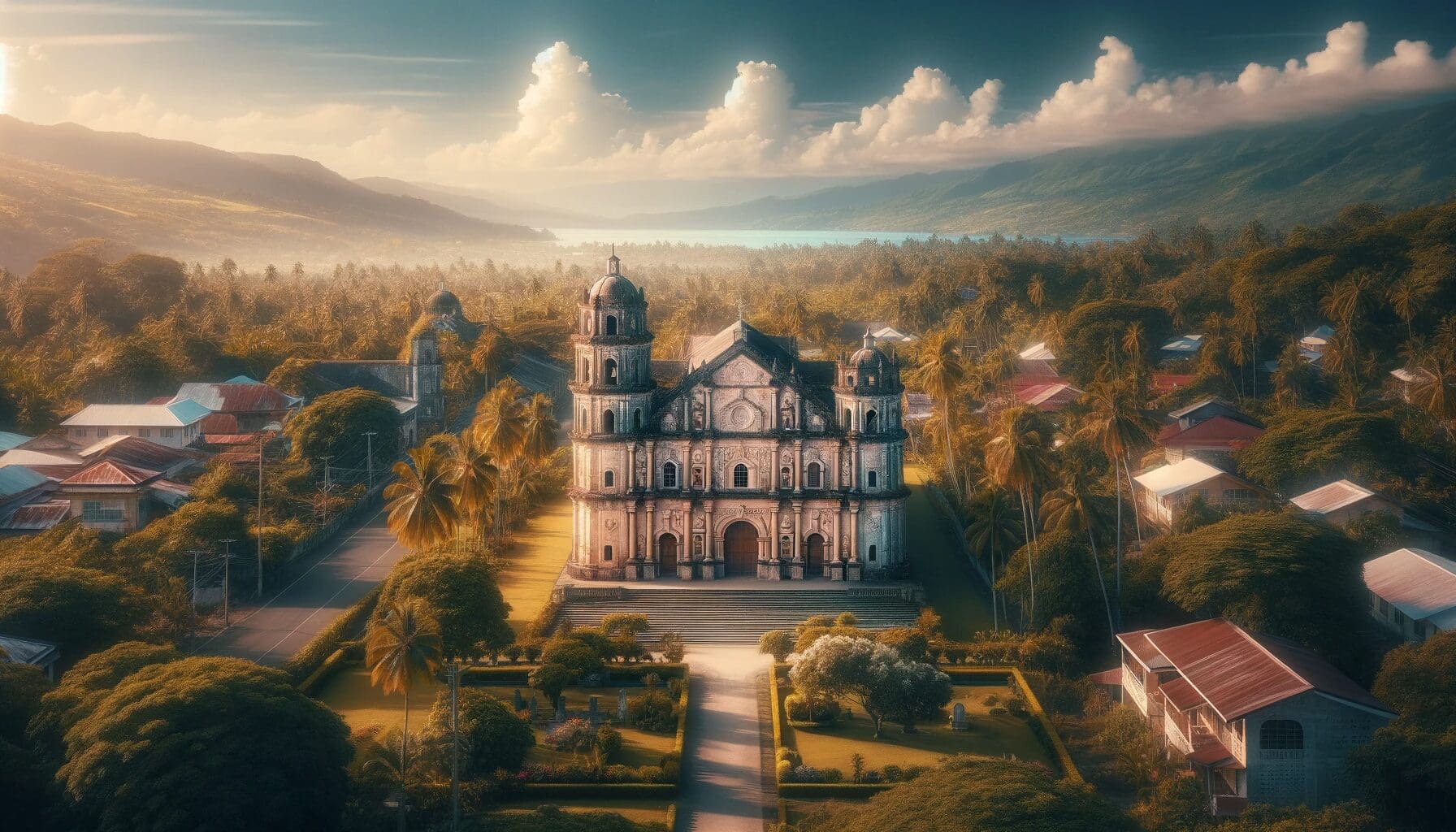

As we explore the beautiful island of Siquijor, we cannot miss the grandeur of the Lazi Church and Convent, also known as the San Isidro Labrador Parish Church and Convent. This Baroque-style church and convent complex is considered the largest and oldest in the province of Siquijor, Philippines.
Located in the municipality of Lazi, the church and convent are accessible by land transportation. It is approximately 42 kilometers from the capital city of Dumaguete and can be reached by bus or private vehicle. The church and convent are situated in the heart of Lazi town, making it easy to find and visit.
The Lazi Convent, built in 1887, is one of the largest convents in the Philippines. It measures 42 meters in length and 38 meters in width. The convent was constructed using coral stones and hardwood by Filipino artisans. The convent is a two-story building with a spacious courtyard and garden. The convent is now used as a museum and showcases the rich history and culture of the town.
The San Isidro Labrador Parish Church, on the other hand, was established in 1857. The church is made of coral stones and has a unique bell tower that is separate from the main building. The church has a spacious nave with beautiful stained-glass windows that depict the life of Saint Isidore the Laborer. The church also has a beautiful altar that is adorned with intricate carvings and gold leaf decorations.
Overall, the Lazi Church and Convent are a must-visit destination for anyone who wants to experience the rich history and culture of Siquijor. The church and convent complex is a testament to the craftsmanship and ingenuity of Filipino artisans during the Spanish colonial period.

The Lazi Convent and San Isidro Church are two of the most significant historical sites in the Philippines. The San Isidro Church, also known as the San Isidro Labrador Church, is a 19th-century church built by the Augustinian Recollects. The church was declared an independent parish in 1857 under the patronage of Saint Isidore the Laborer. The Lazi Convent, on the other hand, was built under the management of P. Toribio Sanchez, OAR. The construction of the convent was completed in 1887, 30 years after the completion of the church.
The Lazi Convent and San Isidro Church are both considered cultural landmarks in Siquijor and are popular destinations for historical tourism in the Philippines. The National Historical Institute declared the church and convent as National Cultural Treasures due to their religious, historical, and architectural significance. The National Museum of the Philippines and the National Commission for Culture and the Arts have also recognized the church and convent as heritage sites.
The San Isidro Church and Lazi Convent are excellent examples of Spanish colonial architecture and Neoclassical architecture in the Philippines. The Augustinian Recollects legacy and Philippine colonial history are also reflected in the church and convent’s rich history. The Lazi Church restoration project, which started in 2001, aimed to preserve the church’s historical and cultural significance.
In conclusion, the Lazi Convent and San Isidro Church are two of the most important historical sites in the Philippines. Their designation as National Cultural Treasures and recognition as heritage sites by various cultural organizations attest to their significance in Philippine history and culture.

The Lazi Convent and Church hold great religious significance in the Philippines. The San Isidro Labrador Parish Church, commonly known as Lazi Church, became an independent parish in 1857 under the advocacy of Saint Isidore the Laborer. It is located in the municipality of Lazi and is within the jurisdiction of the Diocese of Dumaguete.
The St. Isidore Labradore Parish Church, also known as St. Isidore Church, was built in 1884 followed by the Lazi Convent in 1887. These structures are considered to be some of the many old structures that the Spanish colonizers left here in the Philippines during their 300-year occupation. The National Historical Institute declared the church and convent as national landmarks due to its religious, historical, and architectural importance, not only to the province of Siquijor but to the entire Philippines.
The Lazi Church and Convent are hailed as National Historical Landmarks, National Cultural Treasures, and a nominee to be considered as a UNESCO World Heritage Site among the Baroque churches in the Philippines. The church and convent are also home to various religious artifacts that are considered to be of great value to the religious heritage in the Philippines.
Overall, the Lazi Convent and Church are considered to be important religious and cultural landmarks in the Philippines. They serve as a reminder of the country’s rich religious history and the influence of Spanish colonization on Philippine architecture and culture.

The Lazi Convent and Church complex is considered one of the oldest and biggest structures in Siquijor, Philippines. Built during the late 1800s, the church and convent were constructed using coral stones, which were inlaid with wooden reinforcements and fill. The use of coral stones is a common feature of 19th-century Filipino churches, and it gives the structure a unique and distinct look. The walls of the church and convent are meter-thick, and the pediments of the church are adorned with intricate carvings that showcase the artistry of the local artisans.
The bell tower of the church is a standout feature of the complex. It stands tall at the corner of the church, and it has a herringbone pattern on its walls. The bell tower is made of hard wood, and it has a bahay na bato design. The wooden floors of the church and convent are also made of hard wood, which gives the structure a warm and inviting feel.
The original retablos of the church are still intact, and they are made of wood panels that are intricately carved with religious images. The capiz windows of the church and convent are also a notable feature. They are framed with hard wood and have capiz-framed window slides that allow natural light to enter the structure.
The convent structure and materials are also noteworthy. The partitions of the convent are made of hard wood, and the log post design gives the structure a sturdy and durable feel. The basic elements of the old structure are still evident, and they give the structure a sense of history and tradition.
Overall, the design elements of the Lazi Convent and Church complex are a testament to the artistry and craftsmanship of the local artisans. The use of coral stones, hard wood, and intricate carvings make the structure a unique and distinct feature of Siquijor, Philippines.

As we know, the San Isidro Labrador Parish Church and Convent in Lazi, Siquijor are important historical landmarks that reflect the Spanish colonial period in the Philippines. Because of this, there have been efforts to conserve and preserve these structures for future generations.
One of the most significant conservation efforts was the inclusion of the Collective Group of Baroque Churches of the Philippines in the UNESCO World Heritage List. This recognition has brought more attention to the importance of these structures and the need for their preservation.
To be included in the World Heritage List, a long process of nomination and dossier training is required. This process involves a thorough assessment of the site’s cultural and historical significance, as well as its current state of conservation.
In 2017, the Lazi Church restoration was completed after eight months of restoration work by the National Historical Commission of the Philippines. This restoration work has helped to ensure the long-term preservation of the church and convent.
In addition to these efforts, there has been a push for more serious upkeep of the island as a whole. This includes the preservation of its natural resources, cultural heritage and historical landmarks like the Lazi Church and Convent.
Overall, we believe that these conservation efforts are crucial for the preservation of the Lazi Church and Convent as well as the island’s cultural heritage. By working together, we can ensure that these structures continue to stand the test of time and remain an important part of our history.

As we explored the sleepy town of Lazi, we were struck by the deep history of this convent. The San Isidro Labrador Convent is the largest convent in Asia, built in the traditional Bahay-Na-Bato style. It is a grand U-shape structure that stands on a 2,500 square meter land. The convent was constructed by Filipino artisans using coral stones and hardwood, and was completed thirty years after the town church was built.
The convent is now a popular tourist attraction in Siquijor, drawing in many tourist arrivals. Visitors can explore the convent and learn about the recreation of the friars and the history of the municipality of Lazi. The local government has made efforts to preserve the convent and its heritage, and it is now part of the Siquijor Heritage Museum.
One of the highlights of our visit to the convent was the view of the Lazi Church. The church is situated across the road from the convent and is a grand structure in its own right. It is considered one of the largest and oldest churches in Siquijor. The church and convent are surrounded by acacia trees and natural springs, and visitors can take a dip in the turquoise-colored catch basin of the nearby Cambugahay Falls.
As we explored the convent, we felt as though we were transported back in time to the era of Toribio Sanchez, a Franciscan friar who was said to have built the convent. The urban legend surrounding the convent adds to its mystique and allure.
Overall, the Lazi Convent and Church is a must-visit destination for anyone traveling to Siquijor. It is one of the most popular tourist attractions in the area and is a testament to the rich heritage landmarks of Visayas. We recommend adding it to your latest travel itineraries and experiencing the grandeur of this huge convent for yourself.

Tourists can reach the Lazi Convent and Church by taking a ferry or a fast craft from Dumaguete City to Siquijor Island. From there, they can hire a tricycle or a motorcycle to take them to Lazi town. The church and convent are located in the town center, and are easily accessible by foot.
Yes, visitors can tour inside the Lazi Convent and Church. The church is open to the public, and visitors can attend mass or explore the interior of the church. The convent, on the other hand, has been converted into a museum, and visitors can take a guided tour of the museum to learn more about the history of the church and the town.
The Lazi Convent and Church were built in the late 19th century. The church was established in 1857 but it took 30 years before construction was completed in 1887, while the convent was erected in 1887.
The Lazi Convent and Church were built by the Augustinian Recollects, a Spanish religious order that came to the Philippines in the 16th century. The church and convent are examples of the Spanish colonial architecture that can be found throughout the Philippines.
The Lazi Convent and Church are examples of the Baroque architecture that was popular in the Philippines during the Spanish colonial period. The church has a neoclassical facade, while the convent has a more traditional Baroque style.
While many people claim this, there is no evidence to suggest that the Lazi Convent is the largest convent in Asia. While it is one of the largest convents in the Philippines, there are many other convents throughout Asia that are larger and more elaborate.


